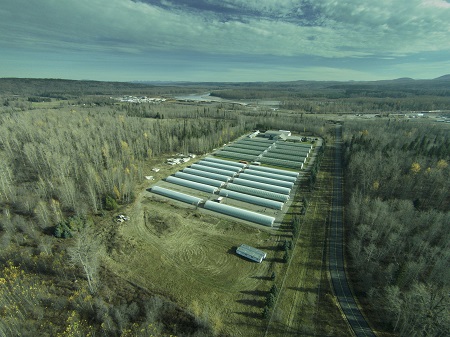Regenerating Forests
Prompt reforestation of harvested areas is key to sustainable forest management. This ensures the forest maintains its ability to grow trees, and provides the young trees with a head start against competing vegetation to reduce the need for manual or chemical brushing treatments. Stands are considered free growing when they reach a stage where their density, health and height make them less vulnerable to competition and more likely to reach maturity.
Prompt reforestation controls invasive non-native plants, which can be difficult to control and can have a significant impact on timber production and agriculture. They can also alter the structure of natural plant communities and threaten biodiversity.
Canfor uses ecologically suitable species to regenerate all harvested areas to healthy, resilient free-growing forests promptly. We determine the species before we harvest, basing the choice on ecosystem type, forest health issues and potential regeneration risks such as frost, flooding or heavy snow.
We also use natural regeneration of local tree species where appropriate to maintain genetic diversity and ensure the trees are adapted to local conditions so they are able to withstand natural disturbance events and agents.
In 2016, we planted 72 million trees on our tenures. Canfor owns and operates the J.D. Little Forest Centre near Prince George, which celebrates its 35th anniversary in 2017 and produces about 14% of our seedling requirements. It grows 9.0 to 9.5 million hybrid white spruce trees every year using Class A improved seed produced in a seed orchard. In addition to the trees we grow ourselves, we buy seedlings from three independent nurseries.

Since 1982, the J.D. Little Forest Centre has produced close to 280 million seedlings.
The nursery process simulates three years in the natural environment. Seeds are sown in greenhouses in March, they grow until July when shade cloths are used to restrict daylight, encouraging them to bud. In mid-October they are lifted, packaged in bundles and frozen. They are thawed in spring and planted within a week. About 98% of the seedlings survive out planting in the bush.
Canfor operations in Alberta and British Columbia use genetically improved seed grown at several seed orchards including Huallen Seed Orchard near Grande Prairie, Alberta, and the Vernon Seed Orchard Company with sites near Quesnel and Vernon, BC, which we own in partnership with two other forest companies.
Improved seed is created through the controlled breeding of known parent trees that exhibit superior attributes. There is no genetic modification; it involves the careful cross-pollination of trees that exhibit desired characteristics such as fast growth or resistance to pests and disease. In Alberta, approximately 50% of Canfor harvested sites are planted with genetically improved stock, and in British Columbia more than 60% of our seedlings are grown from improved seed.
Tree improvement also increases genetic diversity on the landscape because the trees come from a wide geographic area, and the parents are tested to ensure they are suited biologically for the areas where they will be planted.